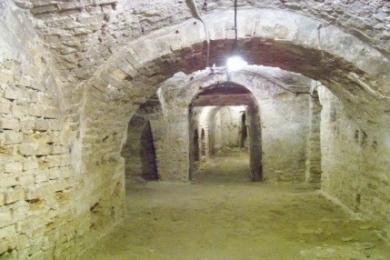Determining the cost of underground facilities included in the architectural complex of Kiev-Pechersk Lavra
By order of the research Institute of monument protection studies by the specialists of "UVECON" carried out work on defining the cost of the 12 sites of the historical and cultural heritage of underground structures included in the architectural complex of Kyiv-Pechersk Lavra, which is included in the List of world cultural heritage).
The Lavra's underground facilities are the underground monument of architecture of the whole of Russia. In the XII century. around the monastery was built a stone fortress walls, which was rebuilt and fortified.
Simultaneously with the walls of the monastery were held and a system of underground tunnels, most of which had a height of 2 m and width 1.2 m. Moves away at a depth of about 7 m and located at the bottom of the foundations and walls.
At a later time on the whole territory of Upper Lavra was built a system of underground tunnels and chambers to store weapons, ammunition, and food.
Performed analysis of large volume of information materials on the history, the architecture, rearrangements of possible losses and other important sources to be considered in determining the value of the evaluated objects, in particular, the determination of their value characteristics and sound.
The work was carried out with consulting support of experts of Scientific research Institute of monument protection studies.
In determining the cost of assessment cost applied methodological approach, subject to the provisions of the Methodology of monetary valuation of monuments and National property appraisal standards. Also used in the work practical experience of experts of the company "UVECON" is described in the manual "Assessment of monuments of history, architecture and urban planning" (Klimenko I. M., Smolnikova S. M., Kyiv: Artek, 2006. - 264 pages).
To cooperate by professional Scientific and technical center real estate expertise (preparation of construction documents).
The work was carried out with consulting support of experts of Scientific research Institute of monument protection studies.
In determining the cost of assessment cost applied methodological approach, subject to the provisions of the Methodology of monetary valuation of monuments and National property appraisal standards. Also used in the work practical experience of experts of the company "UVECON" is described in the manual "Assessment of monuments of history, architecture and urban planning" (Klimenko I. M., Smolnikova S. M., Kyiv: Artek, 2006. - 264 pages).
To cooperate by professional Scientific and technical center real estate expertise (preparation of construction documents).
Completed work is framed in three volumes of the Report.

